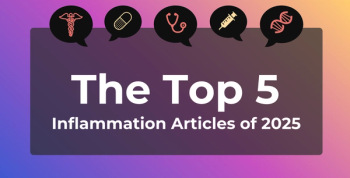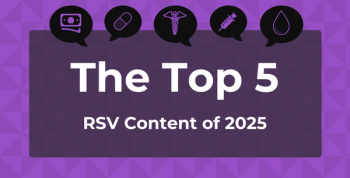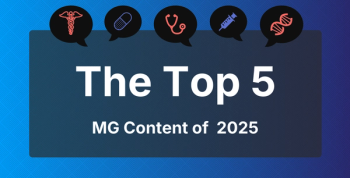
World Health Day 2025 Focuses on Improving Global Maternal, Infant Health
Key Takeaways
- WHO's campaign focuses on ending preventable maternal and newborn deaths, urging global collaboration and investment.
- Global maternal mortality declined by 40% from 2000 to 2023, but progress has slowed since 2016.
World Health Day 2025 highlights the importance of improving maternal and newborn health, emphasizing the need for quality care and investment in regions facing high mortality rates.
In celebration of World Health Day, the World Health Organization (WHO)
World Health Day 2025 Centers Around Maternal, Infant Health
World Health Day is observed annually on April 7 to commemorate the founding of WHO in 1948 and to focus attention on a specific global health issue. In recognition of WHO’s 77th anniversary, this year’s campaign, “Healthy Beginnings, Hopeful Futures,” urges governments and the global health care community to work toward ending preventable maternal and newborn deaths.
The campaign aims to raise awareness of gaps in maternal and newborn survival, advocate for investment in the health of women and babies, encourage collective action to support caregivers, and share essential information.
Challenges in Reducing Maternal Mortality Worldwide
A 40% decline in global maternal deaths from 2000 to 2023 was demonstrated in a new report
However, the report warns that progress has slowed significantly since 2016, with the COVID-19 pandemic and widespread humanitarian funding cuts severely disrupting maternal care. This particularly affects women in fragile and conflict-affected regions, where nearly two-thirds of all maternal deaths now occur. Pregnant women in these settings face dramatically higher maternal mortality risks, with lifetime risks as high as 1 in 24 in countries like Chad and the Central African Republic.
An estimated 260,000 women died due to complications from pregnancy or childbirth in 2023, equivalent to about 1 maternal death every 2 minutes globally. Despite notable progress, sub-Saharan Africa still accounts for about 70% of global maternal deaths.
To get back on track toward meeting the UN’s 2030 Sustainable Development Goal of fewer than 70 maternal deaths per 100,000 live births, the report calls for urgent investment in health systems, education, supply chains, and
“Maternal mortality is not a mystery,” WHO director-general Tedros Adhanom Ghebreyesus, PhD, MSc, said in the report. “We know why it happens, and we have the tools to prevent it. The question, therefore, is not whether we can end preventable maternal deaths, but whether we will.”
Global Disparities in Infant Mortality Highlight Urgent Need for Quality Care
WHO
Despite accounting for only 30% of global live births in 2022, sub-Saharan Africa was the site of 57% of all under-5 deaths. The region had the highest neonatal mortality rate worldwide, with 27 deaths per 1000 live births, followed by central and southern Asia, with 21 deaths per 1000 live births.
Globally, the leading causes of neonatal deaths include premature birth, birth complications, neonatal infections, and congenital anomalies. These conditions are often linked to inadequate care at birth or a lack of skilled care immediately after birth and during the first days of life.
However, WHO noted that women who receive midwife-led continuity of care by professional midwives who are trained and regulated to international standards are 16% less likely to lose their babies and 24% less likely to experience a pre-term birth.
The State of Maternal, Infant Health in the US
The US also faces significant maternal and infant health challenges, as
The US had the highest infant mortality rate in 2020 at 5.4 deaths per 1000 live births. In contrast, Norway had the lowest mortality rate at 1.6 deaths per 1000 live births. Additionally, the US maternal mortality rate was over 3 times the rate in most other high-income countries, with 23.8 maternal deaths for every 100,000 live births.
The situation
The Commonwealth Fund's 2024 State Scorecard on Women’s Health and Reproductive Care revealed significant disparities across states, with Mississippi, Nevada, Texas, and Oklahoma among the lowest performers in women's health care access, affordability, and outcomes. Conversely, Massachusetts, Rhode Island, and Vermont were among the best-performing states in women's health and reproductive care.
The report also demonstrated growing racial and ethnic gaps in women's health outcomes, especially for women of color and those with low incomes, particularly in states with restricted access to comprehensive reproductive health care.
Last year, during a
“Our health care system and the state of maternal health in this country are at an inflection point that requires the urgent attention of this committee; the numbers should alarm all of us,” she said. “The United States has the highest rate of maternal mortality among high-income nations; within recent years, thousands of women have lost their lives due to pregnancy-related causes…The crisis is exacerbated in communities grappling with the lack of access to essential maternal health care.”
References
- World Health Day 2025. World Health Organization. Accessed April 7, 2025.
https://www.who.int/campaigns/world-health-day/2025 - Trends in maternal mortality estimates 2000 to 2023. United Nations. April 7, 2025. Accessed April 7, 2025.
https://cdn.who.int/media/docs/default-source/reproductive-health/maternal-health/trends-in-maternal-mortality-2000-to-2023.pdf - Newborn mortality. World Health Organization. March 14, 2024. Accessed April 7, 2025.
https://www.who.int/news-room/fact-sheets/detail/newborn-mortality - Petrullo J. US has highest infant, maternal mortality rates despite the most health care spending. January 31, 2023. Accessed April 7, 2025.
https://www.ajmc.com/view/us-has-highest-infant-maternal-mortality-rates-despite-the-most-health-care-spending - Grossi G. New report shows worsening health outcomes for women in states with abortion bans. AJMC. July 18, 2024. Accessed April 7, 2025.
https://www.ajmc.com/view/new-report-shows-worsening-health-outcomes-for-women-in-states-with-abortion-bans
Newsletter
Stay ahead of policy, cost, and value—subscribe to AJMC for expert insights at the intersection of clinical care and health economics.







































